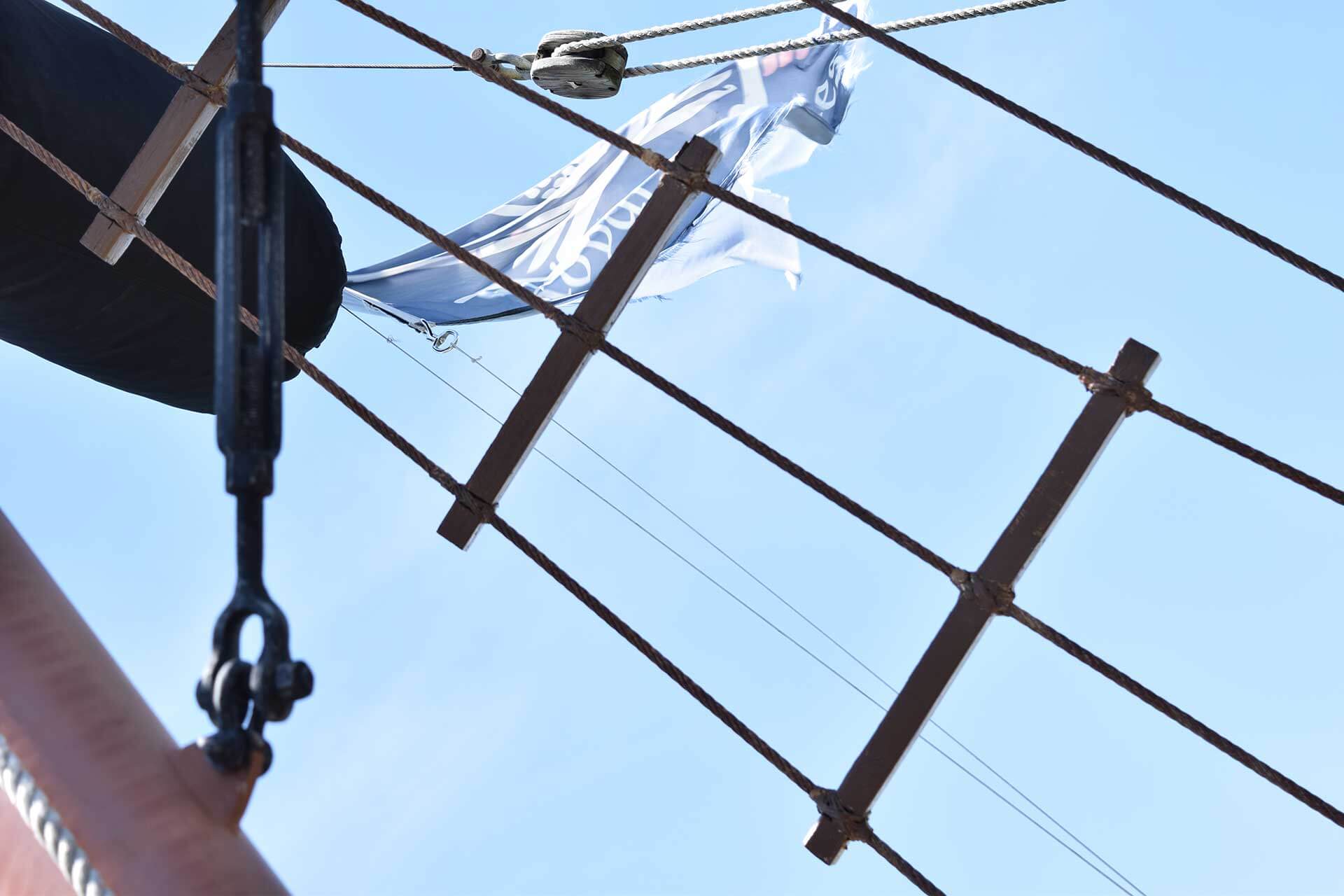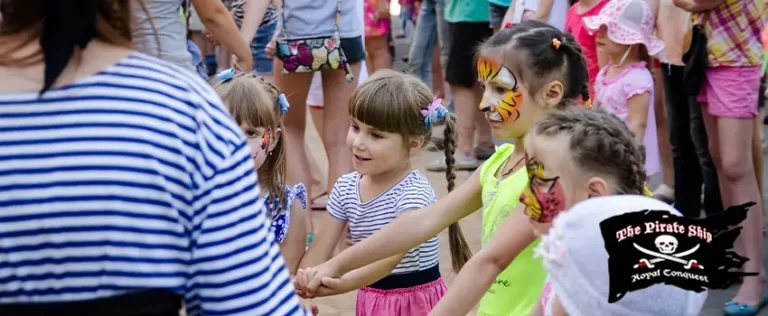Ahoy Maties! January is a fine time for pirates as we celebrate Gasparilla and the first pirate invasion of Tampa Bay. Of course, aboard the Royal Conquest, we celebrate pirates year round, seeking fun pirate adventures and swashbuckling the high seas. However, to be a pirate, you’ve got to know the ways of a pirate and the workings of a true pirate’s vessel. With this detailed guide of a pirate ship, you can get prepared for your next John’s Pass pirate adventure aboard the Royal Conquest!
Parts of a Pirate Ship
* Rigging – The system of ropes, wires and chains used to support and operate the masts, sails, booms and yards of a ship.
* Mast – A large pole (spar) resin above the deck of a ship and supports sails and rigging.
* Foremast – The front mast on a ship or any other sailing vessel.
* Mainmast – The middle, primary mast on a ship or any other sailing vessel.
* Mizzenmast – The aftermost mast on a ship or any other sailing vessel.
* Sail – A large piece of material like cloth, set on mast and used to speed up sailing by being placed in the wind.
* Square sail – A rectangular sail attached on yard, hanging symmetrically across the mast.
* Fore-and-aft sail – A triangular sail set behind mast, attached to a gaff and boom, parallel with a keel.
* Lateen sail – A triangular sail, set on a long yard and sometimes supported with boom.
* Jib – A small fore-and-aft sail extending from the fore-topmast head to the jib-boom.
* Trysail – A small fore-and-aft sail used during the storm conditions and placed instead of the regular sail.
* Course sail – The largest and lowest square sail on a mast
* Spanker – A fore-and-aft sail on an aftermost mast, bent with a gaff and boom.
* Spar – A wooden or metal pole used for rigging such as mast, yard, gaff, boom, etc.
* Bowsprit – A pole which extends forward from the bow of a ship.
* Yardarm or Yard – A pole which horizontally crosses a mast.
* Gaff – A swinging pole used to extend the top of a fore-and-aft sail away from a mast and support it.
* Boom – A horizontal pole used to extend the foot of a fore-and-aft sail from a mast and support it.
* Stay – A heavy rope, cable or wire used as support for a mast or spar.
* Hull –A frame or body of any sailing vessel.
* Keel – The bottom of a hull, scratching from bow to stern.
* Rudder – A metal or wood plate mounted at the stern, used to maneuvers a ship.
* Bulkhead – A water-tight structure dividing a ship into compartments.
* Abaft or aft – A rear section of the ship.
* Bow – The front part of a ship.
* Deck – A horizontal platform covering a hull from one side of a ship to the other.
* Poop – An enclosed structure, a rear part of a deck.
* Stern – The aftermost part of a ship. A captain office and officers’ quarters.
* Forecastle -The part of upper deck at fore end of ship; the forward part of a ship with living quarters.
* Main deck – The highest part of a deck in some vessels.
* Berth -The sleeping and living quarters below main deck or built-in bed on a ship.
* Orlop -The lowest deck on a ship, used for covering storage.
* Bilge –The bottom of a ship, the transition between the bottom and the sides.
* Scuppers – The openings, spreading along edges of a deck and allow water to drain off into the sea.
Resources: http://www.thewayofthepirates.com/pirate-ships-info/ship-parts/, http://pirates.missiledine.com/ships.html











